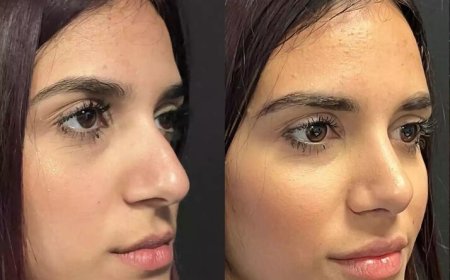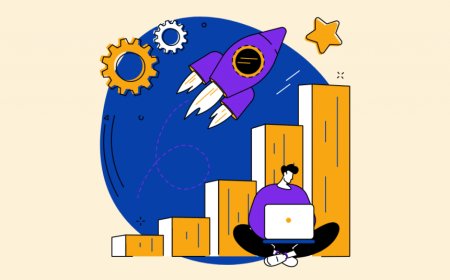How Emerging Tech Is Reshaping Everyday Life in 2025

In 2025, vaping, remote work, AI-powered tools, and smart homes are no longer unusualtheyre part of everyday life. While not everyone considers technology to align with a "natural" lifestyle, the truth is, many modern innovations can support healthier, simpler, and more sustainable living when used thoughtfully.
Whether its reducing waste through smart appliances or improving health through wearable technology, new tech can complement a life that values balance, nature, and mindfulness. In this blog, well explore how emerging technologies are changing daily routinesoften in ways that align with natural living values.
1. Smart Homes Supporting Sustainable Living
Smart home technology has become more common, especially in homes that aim to be energy-efficient and low-impact. Devices today are designed to help users control energy use, water consumption, and home comfort.
Key tools and how they help:
-
Smart thermostats: These learn your schedule and adjust heating or cooling to use less energy when youre not home.
-
LED lighting systems: Smart lights use less electricity and allow users to schedule or dim lights to save power.
-
Leak sensors: These small devices alert you to water leaks early, helping conserve water and avoid damage.
-
Solar panel integration: Many homes now connect solar systems to smart energy monitors to track usage and production in real time.
These tools may rely on technology, but they support natural values like conservation and efficiency.
2. Wearable Tech for Health and Wellness
Staying connected to your body is an important part of a healthy lifestyle. In recent years, wearable technology has made it easier to monitor key health metrics in real time.
Examples of helpful wearables:
-
Fitness trackers: Track daily movement, sleep, and heart rate, encouraging more time outdoors and physical activity.
-
Smartwatches: Many now include blood oxygen levels, stress monitoring, and even hydration reminders.
-
Meditation headbands: These use biofeedback to guide users through breathing and mindfulness exercises.
These tools can serve as gentle reminders to move, rest, or breathe. They can help users become more aware of their own natural rhythms.
3. AI Tools That Save Time and Reduce Waste
Artificial intelligence (AI) has evolved rapidly in the last few years. In 2025, AI is being used not just in business but also in the home to help reduce waste and make smarter decisions.
Real-world uses in daily life:
-
Meal planning apps: Some AI-powered tools now suggest weekly meals based on whats already in your fridge, cutting down food waste.
-
Garden assistants: AI-powered apps can tell you when to water plants, diagnose plant diseases, or suggest seasonal planting schedules.
-
Digital assistants: Tools like Google Assistant or Alexa can schedule routines, remind you of self-care tasks, or suggest low-energy settings for appliances.
When used with intention, AI can help simplify busy lives, giving people more time to focus on offline activities like spending time in nature or preparing home-cooked meals.
4. Tech in Transportation and Mobility
Transportation is another area where emerging tech is making a clear difference in how people live and move. While cars and public transit are still a part of life, they are becoming more efficient and eco-friendly.
Whats changing in 2025:
-
Electric vehicles (EVs): These are now more affordable and accessible, offering lower emissions for both city and rural travel.
-
Bike-sharing programs: Many cities now use app-connected, electric-assisted bicycles to reduce traffic and pollution.
-
Work-from-home options: Thanks to better video conferencing and collaboration tools, fewer people need to commute daily, saving time and reducing environmental impact.
This shift supports a lifestyle with less rush, more time at home, and lower carbon emissionsall important to those who care about the natural world.
The Balance Between Nature and Technology
Its easy to think of technology and nature as opposites. But when used with care, tech can support a lifestyle that values natural health, mindfulness, and sustainability.
Here are a few ways to keep that balance:
-
Use smart tools that promote conservation or reduce waste.
-
Choose apps that encourage outdoor activity, rest, or healthier habits.
-
Limit screen time and take breaks in natural spaces to reconnect.
-
Be intentionallet tech support your values, not distract from them.
Technology can be part of a nature-focused life when its used with purpose. The goal is not to avoid it entirely, but to use it in ways that align with how you want to live.
Final Thoughts
In 2025, emerging technologies are not just about faster devices or more datatheyre about solving real problems in everyday life. For those who care about natural living, this might mean using a smart thermostat to reduce energy use, wearing a fitness tracker to improve health, or using an app to plan more sustainable meals.
By being thoughtful in how we use technology, it becomes a toolnot a distraction. It can support our goals for wellness, simplicity, and connection to the world around us.
Even industries once considered separate from natural living are being influenced by tech. For example, the best vape flavors now often include natural extracts and fewer synthetic ingredients, showing how even modern habits are adapting to more mindful consumer preferences.
As we move forward, the relationship between technology and nature doesnt have to be a conflict. With awareness and choice, they can work together.

























